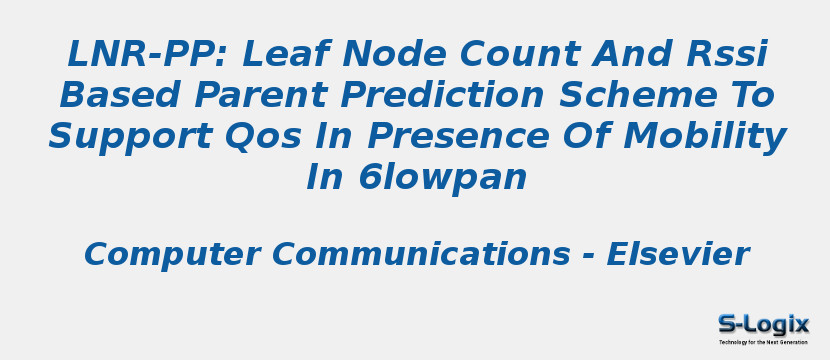Research Area: Internet of Things
6LoWPAN network consists of embedded devices and sensors that senses environmental data and passes it to a root called as a 6LBR (6LoWPAN Border Router) which further transfers it to an Internet server for aggregation and processing. Earlier definition of 6LoWPAN consists of devices which are static with constrained resources such as computing power, memory, battery power and communication bandwidth. Recent additions such as mobile devices which are part of the 6LoWPAN network often cause frequent topology changes and disconnections, leading to degraded performance of the network. Handover delay, data loss rate, number of control messages, energy utilization are some of the performance metrics that has been focused and improved by recent works in the literature. But the proposed approaches work well when the number of mobile nodes and mobility rate are moderate. We identify the issues that arise in the 6LoWPAN RPL based network due to higher number of mobile nodes and higher mobility rate which causes problems like delay in data transmission and degraded parent node performance. In this paper we study, analyse and propose modifications in the popular protocols that support mobility in 6LoWPAN such as EC-MRPL. We propose a best-effort scheme called LNR-PP (Leaf node count and RSSI based Parent Prediction) to identify affected Static Nodes (SN) to whom large number of Mobile Nodes (MN) are connected. We call this scheme as a best effort since the parent prediction depends upon the number of neighbours available within the reach of MN in mobility. LNR-PP performs balanced leaf node (Mobile Node) allocation to SN in an effort to minimize the number of RPL control message packets, delay in forwarding data from the MN and power required to transmit control and data packets through SN. This enables the mobile nodes (MN) to communicate with DODAG-ROOT with guaranteed QoS measures under high mobility scenario. We developed a mathematical model to realize the benefits of the proposed scheme which can be incorporated into EC-MRPL and simulated with sample network parameters in MATLAB. The results obtained through simulation shows a significant improvement in term of number of RPL control message packets such as DIS and DIO, power requirement to transfer control and data packets through SN and delay encountered by SN while forwarding large volume of data from MN.
Keywords:
Author(s) Name: Suganya P ,Pradeep Reddy C.H.b
Journal name: Computer Communications
Conferrence name:
Publisher name: ELSEVIER
DOI: https://doi.org/10.1016/j.comcom.2019.12.012
Volume Information: Volume 150, 15 January 2020, Pages 472-487
